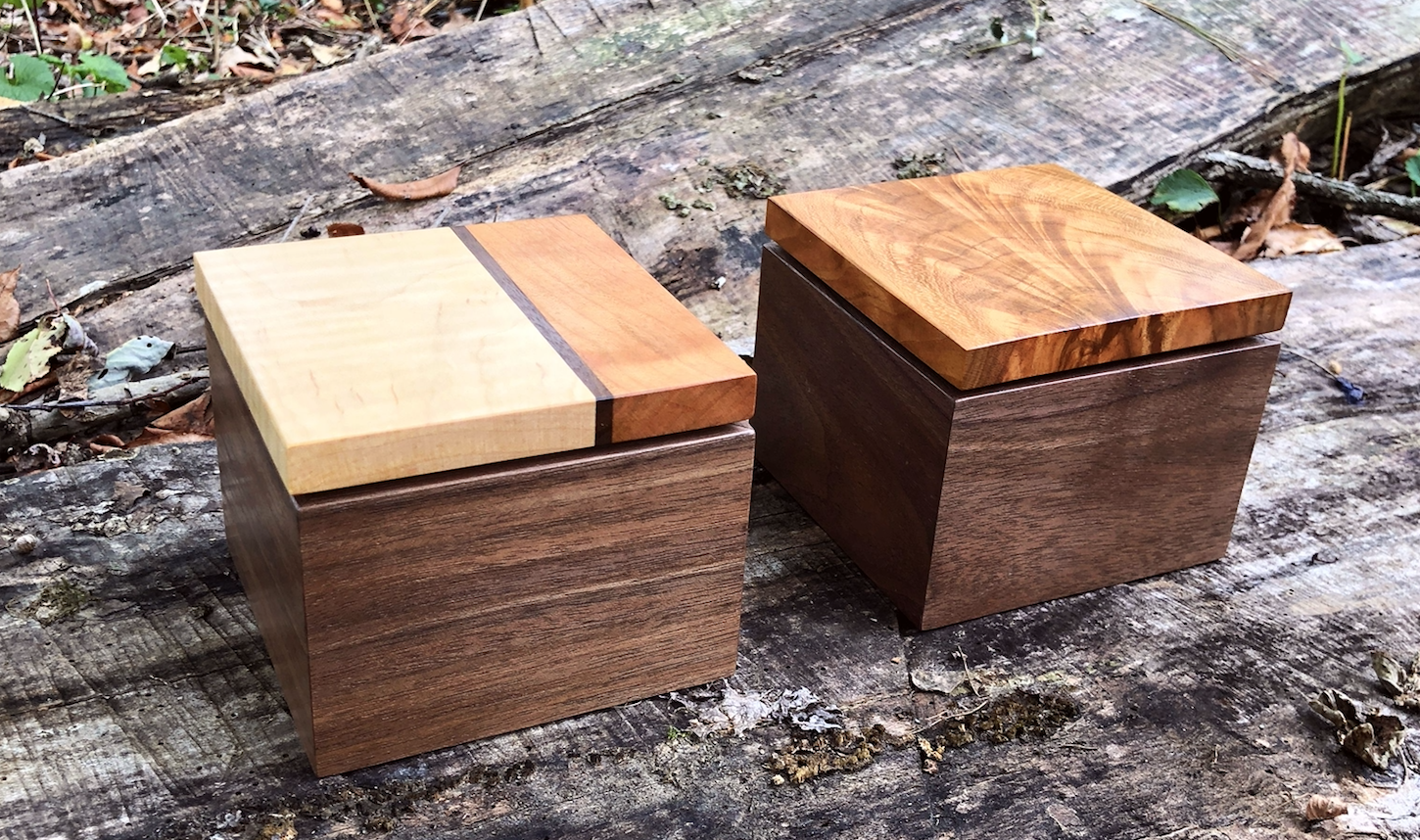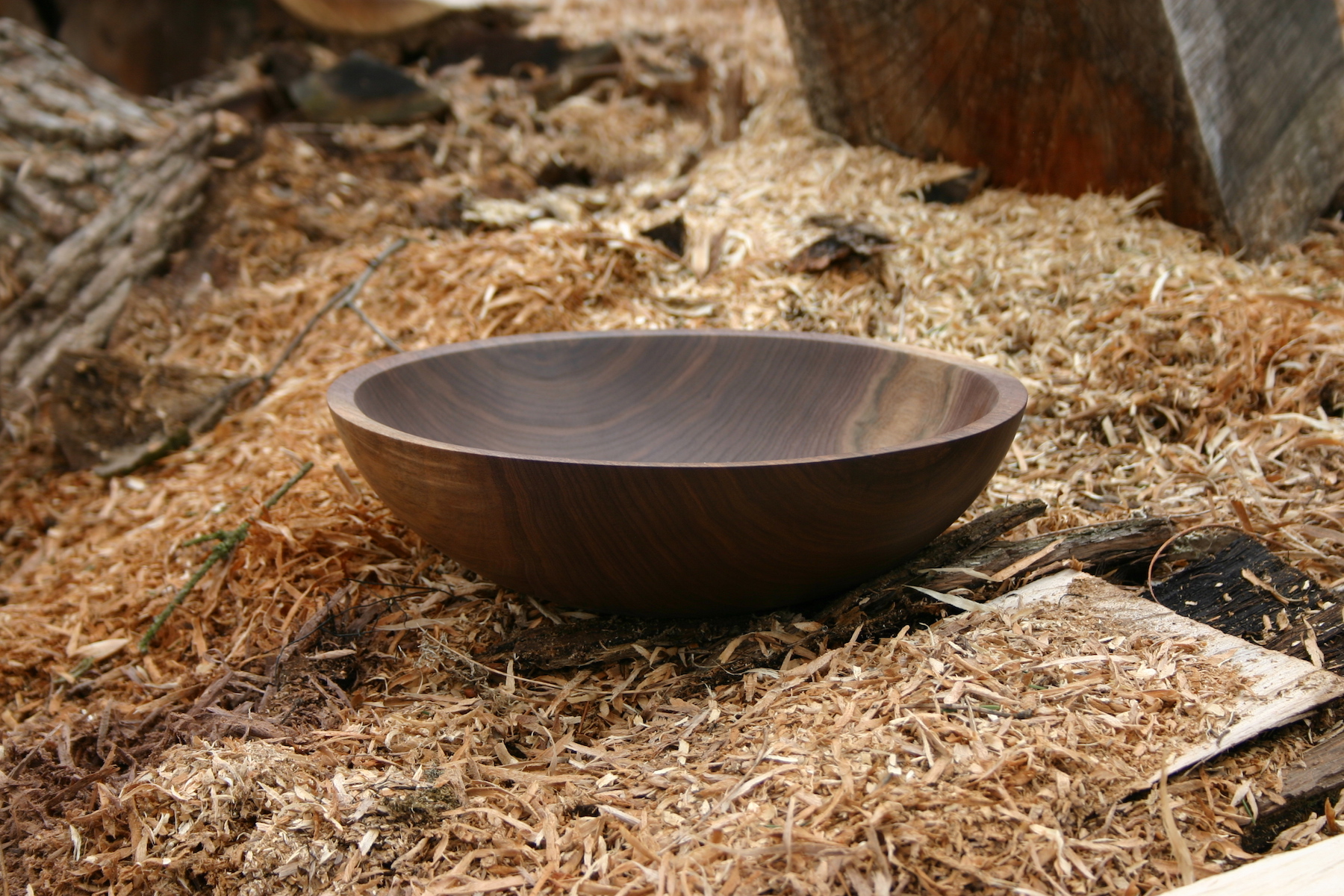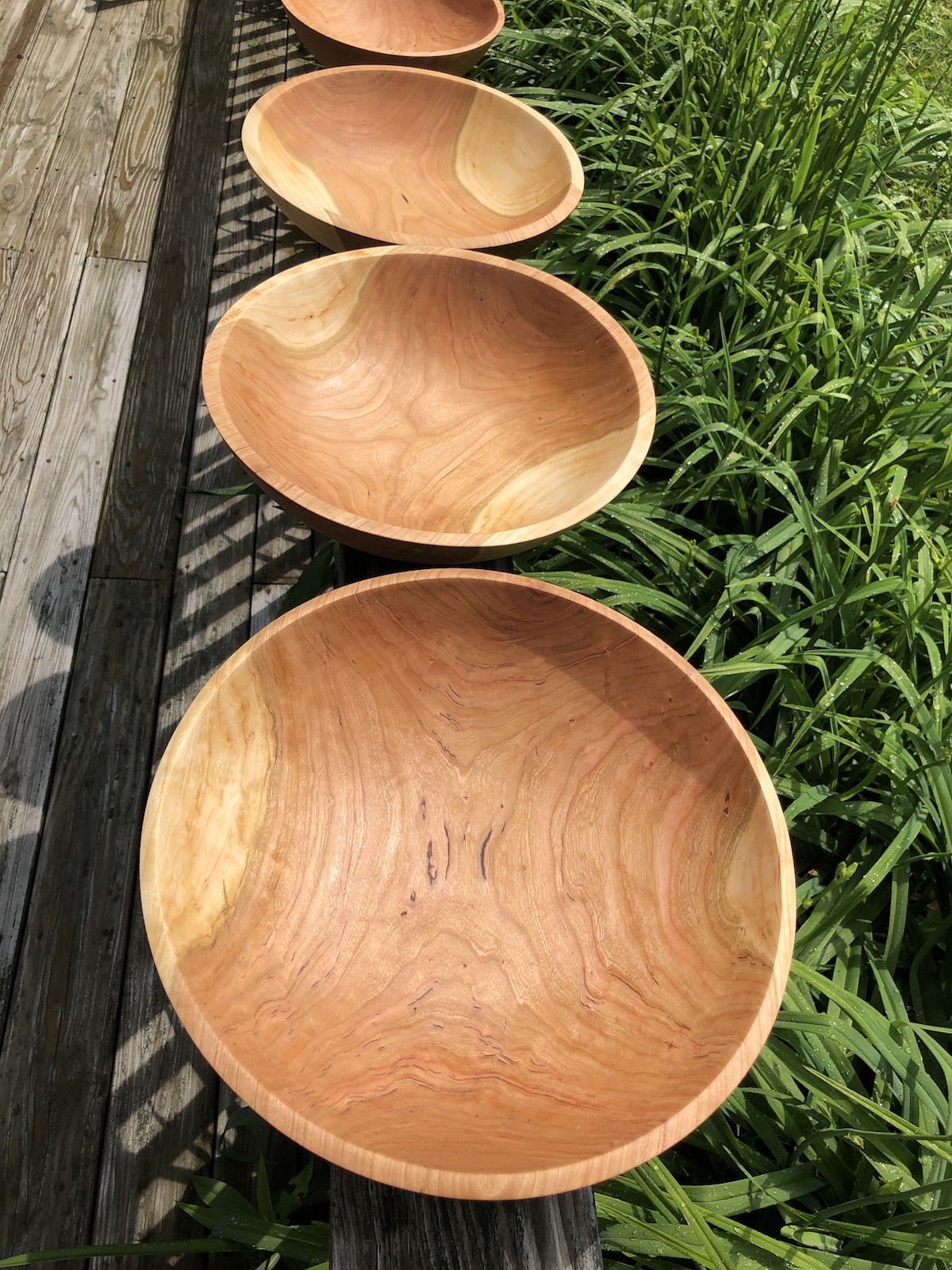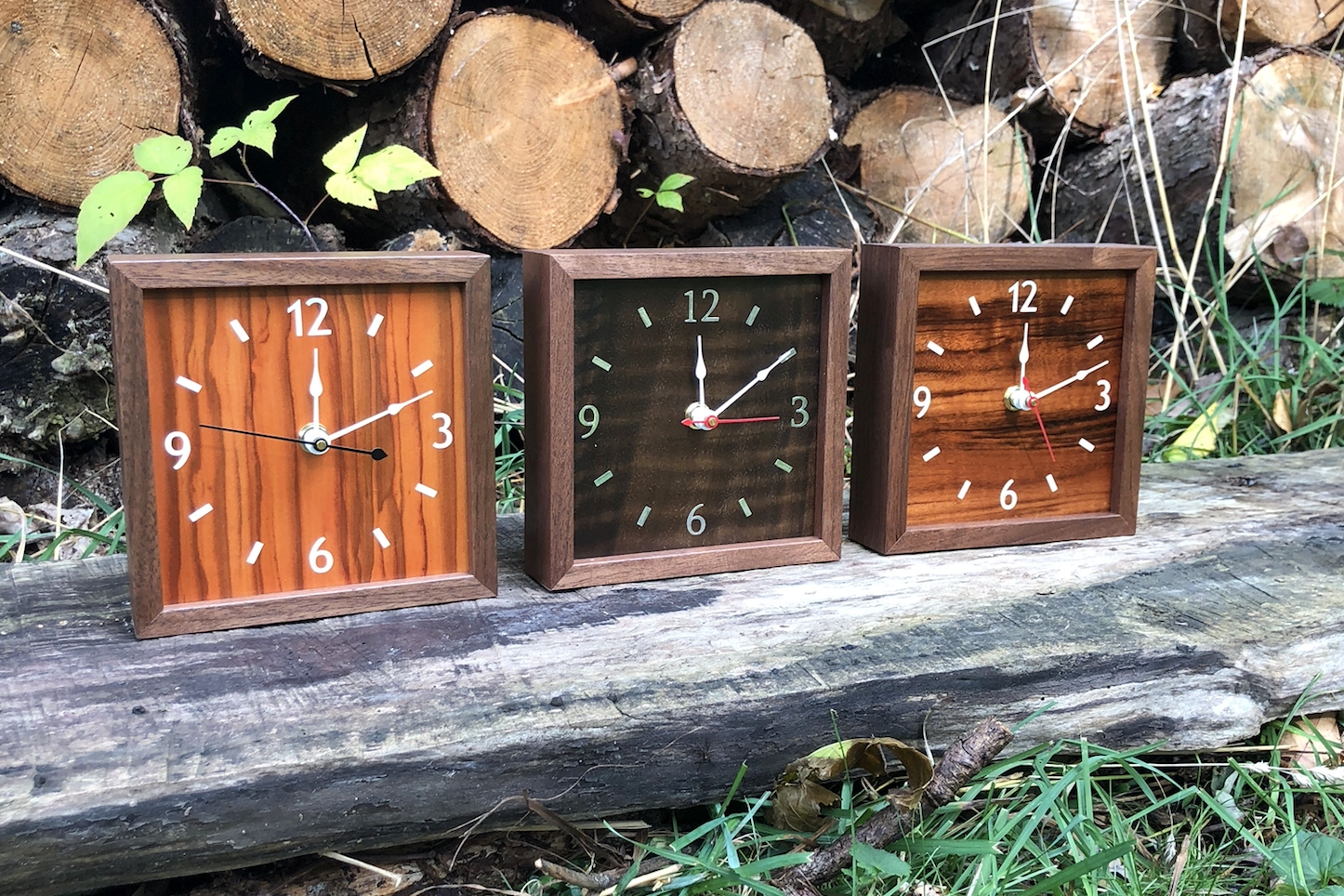Meet the Maker: David Pearson
Pittsburgh-based artist David Pearson is a self-taught woodworker who takes discarded pieces of wood and turns them into one-of-a-kind bowls, clocks, boxes, cutting/charcuterie boards, jewelry and ornaments. His pieces showcase the grain patterns, beautiful figuring and warmth of wood, and his work is currently at our Museum Shop!
During the following interview, David answered our questions about his artistic practice and shared the motivation behind his work. Read on to learn more.
To have the opportunity to add one of his works to your collection, to purchase one of his pieces as a gift for a loved one, or to meet David in person, register to shop during the Museum Shop Holiday Mart!
What is the first thing you can remember making?
The first thing I can remember making is a Pinewood Derby car in Cub Scouts. My dad did most of the hard stuff, but I sanded it and painted it. We also made a Pinewood Derby sailboat that was painted purple and dubbed “Grape Jelly.” It was the fastest boat in the derby, but got stuck on some caulk used to seal the gutters that they were racing in and we lost in the second round.
Please, describe your work:
I like to think that my work is simple and clean. I tend to stick with wood that is common to our area, cherry, walnut and maple. I make wooden bowls out of downed trees that find. There have been many times that I have picked up logs on the side of the road. For cutting boards and boxes, I use wood from a local sawmill.
 What drew you to working with wood?
What drew you to working with wood?
My dad has been a hobby woodworker for as long as I can remember, so I guess you can say that it’s in my blood. I grew up with a shop in our basement full of wood and sawdust. I’ve continued to work with wood because I think it’s fascinating that you can take this living thing that is everywhere and transform it into anything. For me, turning a bowl from an old log is one of the most satisfying things about woodworking.
What types of wood do you work with? Do you have a favorite type and why?
I like to work with what I call ‘the Trinity:’ cherry, walnut and maple. These are three woods common to our area, easy to work with and each has a different color. Cherry is a reddish brown, walnut is a dark brown and walnut is a very light wood. A lot of my early pieces were out of cherry, but lately I have been using walnut a lot.
What is your motivation for creating these pieces?
I like to keep busy and I like to be creative. I am always looking at things with an eye for how they were put together. Sometimes ideas for pieces pop in my head and I keep thinking about them, how to make them, the steps, the process. It’s like a game, or a puzzle.
 Please describe the process of creating a wooden bowl or clock?
Please describe the process of creating a wooden bowl or clock?
Making bowls is done through a process called turning. Turning gets its name from the process which uses a lathe to spin a chunk of wood really fast. Tools called gouges are used to carve the wood. Gouges are like curved chisels. I like to start making a bowl with freshly downed wood, which is still very wet. Wood is much softer when it is wet. I rough out a bowl with the fresh, wet wood then I let it dry for several months. I use a scale to track the weight of the piece and when it stops losing weight, I know that it is dry enough to finish. During the drying process, the wood warps, so I put it back on the lathe, even it out with the bowl gouge, and start the sanding process that can take hours. I usually start with an 80 grit sandpaper and work my way up to a 600 or 800 grit.
Making clocks, boxes or cutting boards is a totally different process that deals with straight lines and is sometimes referred to as “flatwork.” In turning, nothing is straight. In flatwork, everything is straight. Going back and forth between these two processes keeps things interesting.
 Describe for us the atmosphere when you are at work?
Describe for us the atmosphere when you are at work?
My shop is in my garage. It’s packed with just about as many tools as I can fit in it. During the early part of the pandemic I completely reorganized my shop. The winter can be hard on the feet when the concrete floor is 40 degrees, so I put down a floating wood floor which required me to move everything out. That gave me the perfect opportunity to reorganize everything. Almost everything is on wheels now and I made rolling storage carts that double as workspace. In the summer, I can open the garage door and enjoy the fresh air and sunshine.
What is the most fulfilling part about your work?
When I get done with a piece I always focus on the imperfections, the mistakes, the flaws. I love seeing a piece a few years later, when I have forgotten all of that. It’s great to see a piece that has been well used and well loved.
